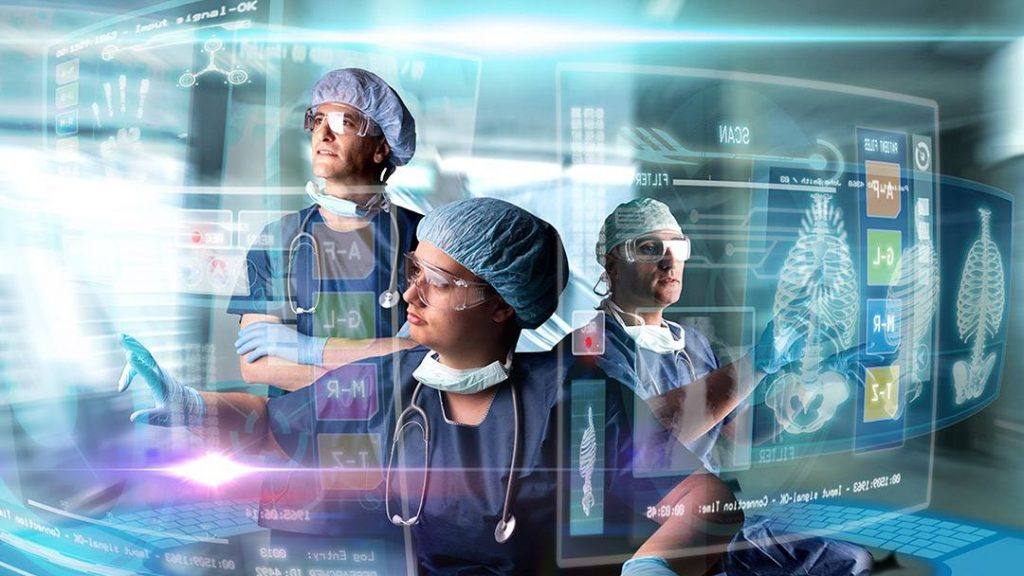
Artificial intelligence has a vital role in helping researchers in their efforts to fight COVID-19 and is an important tool in the work being done at Mayo Clinic.
Dr. Andrew Badley is an infectious diseases specialist and leads Mayo Clinic’s COVID-19 Research Task Force. In this Q&A, Dr. Badley answers questions about the task force and the role of artificial intelligence.
Watch: Dr. Andrew Badley talks artificial intelligence in COVID-19 research
Journalists: Sound bites with Dr. Badley are in the downloads at the end of the post.Please courtesy "Andrew Badley, M.D. /COVID-19 Research Task Force / Mayo Clinic."
Q: How did Mayo Clinic's COVID-19 Research Task Force come together?
A: We like to think of it as almost a platform-approach to handling COVID-19. We created twelve parallel work streams that deal with everything we can imagine related to SARS-CoV-2 the virus and COVID-19 the disease. And those work streams cover basic virology. We have capabilities to basic virology experiments on the virus, to artificial intelligence activities, to database creation, to perspective biobanking, to translational studies, to immunology studies, health disparities research, to clinical trials and clinical trial implementation.
Q: How is artificial intelligence helping with the research?
A: Mayo has had a significant presence in the artificial intelligence space, and it is continuing to grow. The first way which is already up and running has already made an impact on COVID disease transmission. We plot where infections are incurring. Most of the programs which track that measure just the number of positive cases that you have. If you have no positive cases, but no tests in that area, you could falsely assume there’s not a lot of cases there. We also know that if you start tracking the rate of positive cases, that if you get to a very high level of positive cases like we were seeing in Italy, that probably means we’re not capturing enough of the cases. Conversely, if you get a very low rate of positive cases, that means you’re probably testing the population well, an example of that is Japan.
Early on, Mayo Clinic created a real-time tracking platform to measure the rate of positive cases throughout all counties in Minnesota. When we did that, we noticed that there was an outlier which occurred in Martin County. The rate of a positive test in Martin County was approaching ten percent, whereas the rate of positive testing for most of the other counties was in the neighborhood of one or two percent. Based on that, we said ‘we’re probably not doing enough testing in Martin County.’ We redeployed tests to that area. We’ve deployed personal protective equipment to the healthcare workers in that area who were doing the tests. Quite rapidly we investigated, we identified a significant number of additional cases. After we identified those cases, we counseled on self-quarantining and therapy as indicated. And we’d like to think that doing that activity has helped to prevent new transmission.
Q: Along with tracking the virus, how else is ai being used for COVID research?
A: Understanding the disease pathogenesis is going to be critical to align different treatment strategies with different disease stages. One of the things that artificial intelligence can do, is it can synthesize massive amounts of data very, very quickly. We’ve been able to look at massive amounts of data, hundreds of millions of documents, and extract the pertinent components of that to help understand the disease pathophysiology.
Q: Can you share an example of this approach?
A: One example is, using these approaches, we have identified which cells in the human body express the ACE-2 receptor. ACE-2 receptor is what the SARS coronavirus binds to gain entry and cause infection. As we did that, we identified that some tissues that you’d expect have that receptor and that includes the nasopharynx, the oropharynx and the lungs, and we all know that the virus goes there.
We also identified that other tissues that aren’t quite as expected to have direct infection are also involved and that includes the heart and the gut and the kidney and as it turns out, the testes. It turns out that all of those tissues are showing evidence that they can be dysfunctional during COVID disease. We now know that there is a substantial portion of patients getting myocarditis, acute kidney injury with proteinuria and hematuria. There is a significant proportion – about 25 percent – in our experience who have gastrointestinal symptoms and/or diarrhea. And based on that dataset, before we’ve seen the large number of cases, we predicted that we’d start to see some case of orchitis or swelling of the testes, and lo and behold, we’ve started to see some reports of orchitis.
Moving more into the treatment paradigm knowing when GM-CSF becomes abnormal in the course of disease, and when IL-6 becomes elevated in the course of disease, allows us to align our immune-based therapies more closely with the stage of disease that is being targeted.
Check the Centers for Disease Control and Prevention website for additional updates on COVID-19. For more information and all your COVID-19 coverage, go to the Mayo Clinic News Network and mayoclinic.org.
Related Articles







